

Startup SpinLaunch completes first test flight with wild rocket-flinging launch...
source link: https://www.space.com/spinlaunch-first-test-flight-success
Go to the source link to view the article. You can view the picture content, updated content and better typesetting reading experience. If the link is broken, please click the button below to view the snapshot at that time.

Startup SpinLaunch completes first test flight with wild rocket-flinging launch system
By
2 days ago
The alternative rocket system reached 'tens of thousands of feet' in altitude, the company says.
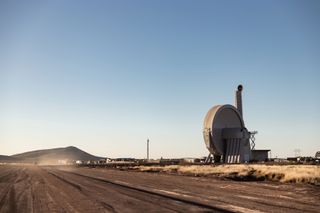
Alternative launch company SpinLaunch's accleration chamber is seen at Spaceport America in New Mexico. The system flings rockets toward the sky with a spinning arm. (Image credit: SpinLaunch)
A new type of rocket-launching system just got off the ground.
The California-based company SpinLaunch performed the test flight of its novel kinetic-energy-based launch system in New Mexico on Oct. 22, reaching an altitude of "tens of thousands of feet," CEO Jonathan Yaney told CNBC, which first reported the successful launch test. You can see footage of the flight here.
The company has received more than $110 million in venture capital for its system, which spins up a small rocket to hypersonic speed on the ground. Once released, the final design calls for the rocket to shoot up in the air, and only turning on more conventional chemical propulsion when it's well on its way to orbit.
SpinLaunch has kept pretty quiet about its progress for several years ahead of this launch. "I find that the more audacious and crazy the project is, the better off you are just working on it – rather than being out there talking about it," Yaney told CNBC Tuesday (Nov. 9). "We had to prove to ourselves that we could actually pull this off."
Related: Take a Tour of Spaceport America (Photos)
- video playing
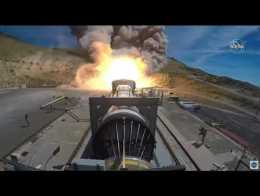
- Space Launch System Rocket's First Crew...19/08/16
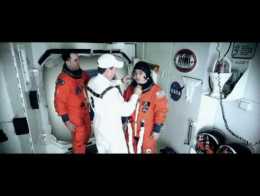
- China's Long March 2F rocket rolled out for new...10/10/21
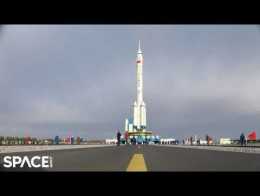
- Chinese rolls out rocket for space station supply...16/09/21

- Firefly test-fires Alpha rocket at Vandenberg...20/08/21
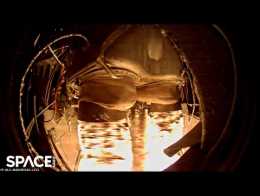
- Airline passenger sees Atlas V rocket launch...22/05/21
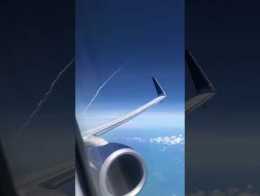

SpinLaunch was founded in 2014 and is part of a crowded field of firms trying to reduce the costs of launching. SpinLaunch suggests that reducing fuel costs, one of the key barriers to affordable spaceflight, will make their system accessible to customers. (Other companies are taking on cost-saving ideas such as 3D manufacturing parts such as rocket engines, or pursuing reusability of key launch systems.)
For this first test flight, Yaney told CNBC, SpinLaunch used a suborbital accelerator at one-third scale. The scale accelerator is more than 300 feet (91 meters) tall, roughly equivalent to the Statue of Liberty's height.
This accelerator, after running the projectile through a vacuum chamber on a rotating arm, pushed the 10-foot (3-meter) rocket aloft from Spaceport America in New Mexico at roughly 20% of the accelerator's full power capacity.
The test projectile "goes as fast as the orbital system needs, which is many thousands of miles an hour," Yaney told CNBC, adding the test will allow them to "validate our aerodynamic models for what our orbital launch vehicles are going to be like, and ... try out new technologies when it comes to release mechanisms."
This first test flight didn't feature a rocket engine, but SpinLaunch plans to include one in future suborbital test flights. The company also plans to pursue reusability for newer rockets, although the first test rocket proved "absolutely flyable" after engineers retrieved it, Yaney said.
While the full-scale system is still under design work, Yaney said SpinLaunch plans to reduce the size, complexity and cost of the rocket when compared to the competition.
The company expects that its booster won't face the usual problems fuel-carrying rockets have, as the typical rocket has to push its own mass, the mass of the fuel and the mass of the payload off the ground. Without the need to carry so much fuel, SpinLaunch says, the rocket size can accordingly be reduced.
Other parts of the business are still under development, too. The company is seeking a more "coastal location" than Spaceport America for its eventual operational launches, which would be "able to support dozens of launches per day," Yaney told CNBC.
The company also declined to tell CNBC much about its customer base, although SpinLaunch did sign a "launch prototype contract" in 2019 with the Department of Defense.
Its $35 million fundraising round in January 2020 included the investors Airbus Ventures, GV, KPCB, Catapult Ventures, Lauder Partners, John Doerr and Byers Family. Back then, SpinLaunch was expecting to do its first operational flight in 2022.
Follow Elizabeth Howell on Twitter @howellspace. Follow us on Twitter @Spacedotcom and on Facebook.
Join our Space Forums to keep talking space on the latest missions, night sky and more! And if you have a news tip, correction or comment, let us know at: [email protected].

Contributing Writer
Elizabeth Howell is a contributing writer for Space.com who is one of the few Canadian journalists to report regularly on space exploration. She is the author or co-author of several books on space exploration. Elizabeth holds a Ph.D. from the University of North Dakota in Space Studies, and an M.Sc. from the same department. She also holds a bachelor of journalism degree from Carleton University in Canada, where she began her space-writing career in 2004. Besides writing, Elizabeth teaches communications at the university and community college level, and for government training schools. To see her latest projects, follow Elizabeth on Twitter at @howellspace.
Recommend
About Joyk
Aggregate valuable and interesting links.
Joyk means Joy of geeK